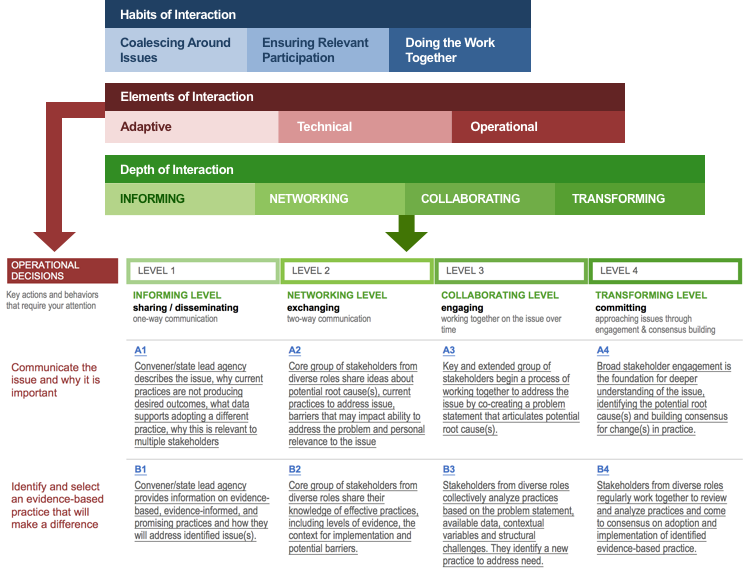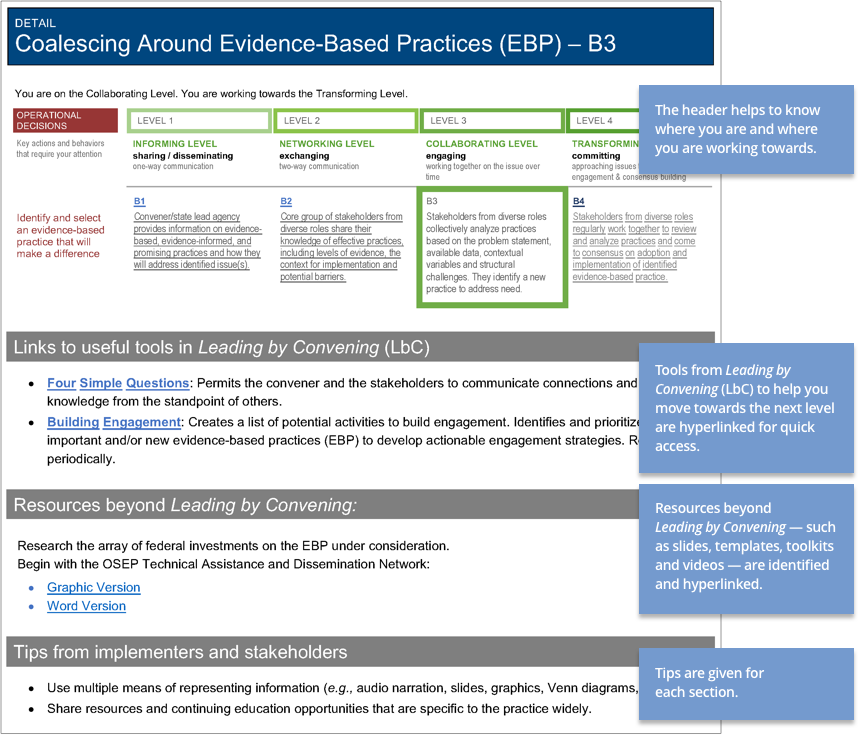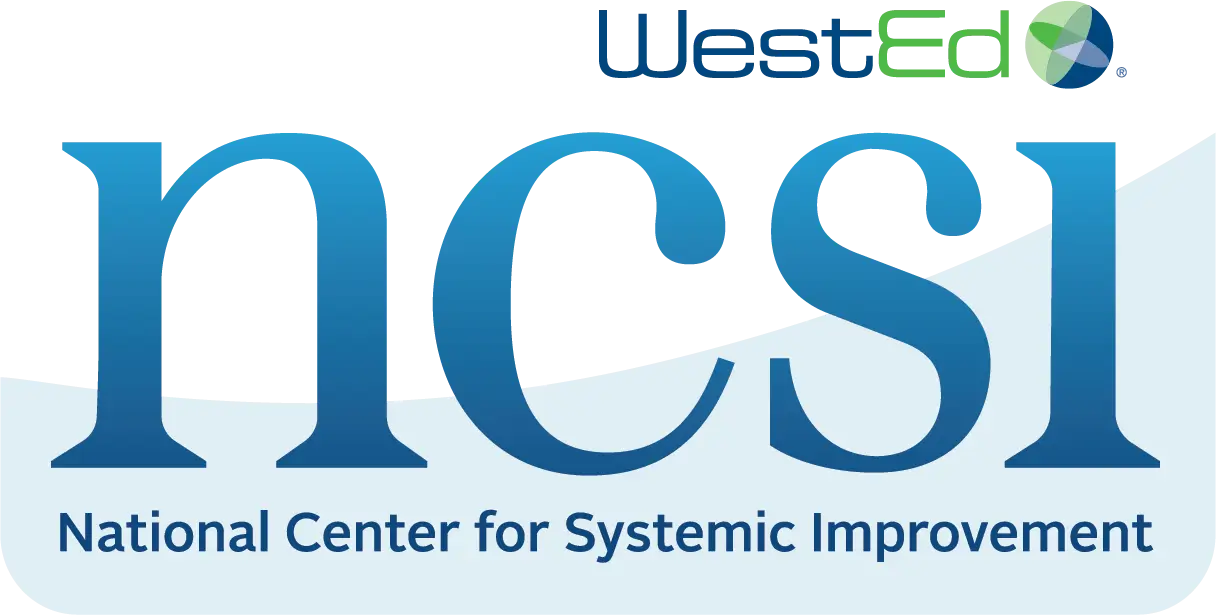A rubric is a coherent set of criteria that includes descriptions of levels of performance quality on the criteria. (ASCD, 2013) In the Leading by Convening (LbC) Blueprint, rubrics describe the behavior of systems, leaders and stakeholders as they build authentic engagement.
Rubrics are often said to be ‘as good as their description.’ In LbC, all rubrics have been written by a diverse group of stakeholders with a wide variety of experiences in leading and participating in collaborative efforts. Through this process, these rubrics uniquely capture and present the stakeholder experience in system collaboration.
As written, rubrics are descriptive, not evaluative. But, when used to compare current levels of interaction against those described in the rubric, they provide a useful way to assess interaction and deepening levels of engagement.
Download the Blueprint
Leaders have used the LbC Blueprint, tools, and learning activities with success across state and local settings.
Working together for more than 15 years to move research and policy into practice, IDEA partners agreed that collective influence has the potential to change outcomes. Learn how to engage decision-makers, practitioners, and consumers in ways that lead to unified action.
Building Support Through Data
Sharing data is not the same as building support through data. Building support requires dialogue, exchange, shared meaning and the commitment to joint messaging.
Coalescing Around Evidence-Based Practices
Training individuals on an evidence-based practice is not the same as coalescing individuals around that practice. Coalescing demands an exploration of the issue from the perspective of the implementers and stakeholders.
Creating Active Engagement
Engagement differs meaningfully from participation. Although increasing participation builds the working relationships necessary for change and sustainability.
Stakeholder Engagement in Evaluation
Stakeholders can be valuable allies in creating evaluations that tap into local practice and use the expertise of implementers and stakeholders to inform mid-course decisions and impact lasting change.
The RDA/SSIP rubrics
Four new rubrics were developed to support LbC as a tool in Results Driven Accountability (RDA) and the State Systemic Improvement Plan (SSIP). Stakeholder engagement is a core principle in Results Driven Accountability (RDA) and State Systemic Improvement Plan (SSIP). Each of the rubrics addresses an aspect of engagement that can help states increase stakeholder participation and build active engagement.
Using the LbC Rubrics
Each LbC rubric describes a set of observable behaviors focused on a change in the practice of authentic stakeholder engagement. The rubrics can be used by teams to:
- discuss authentic engagement from the viewpoint of the stakeholders;
- assess current levels of interaction;
- guide future interaction;
- routinely assess changes in perception and practice; and
- chronicle changes in outcomes as engagement deepens.
Rubrics typically list criteria in the left column and describe levels of performance in columns moving to the right. This arrangement creates cells that describe the performance at each level for each criterion. In the LbC rubrics, the criterion column is called an “operational decision.” Operational decisions result when a team examines both the technical and adaptive aspects of the change it envisions and defines several important aspects of interaction that will require attention.

Each rubric is interactive. Follow the image below to see how you can interact with the rubrics as you move towards greater depths of interaction.


